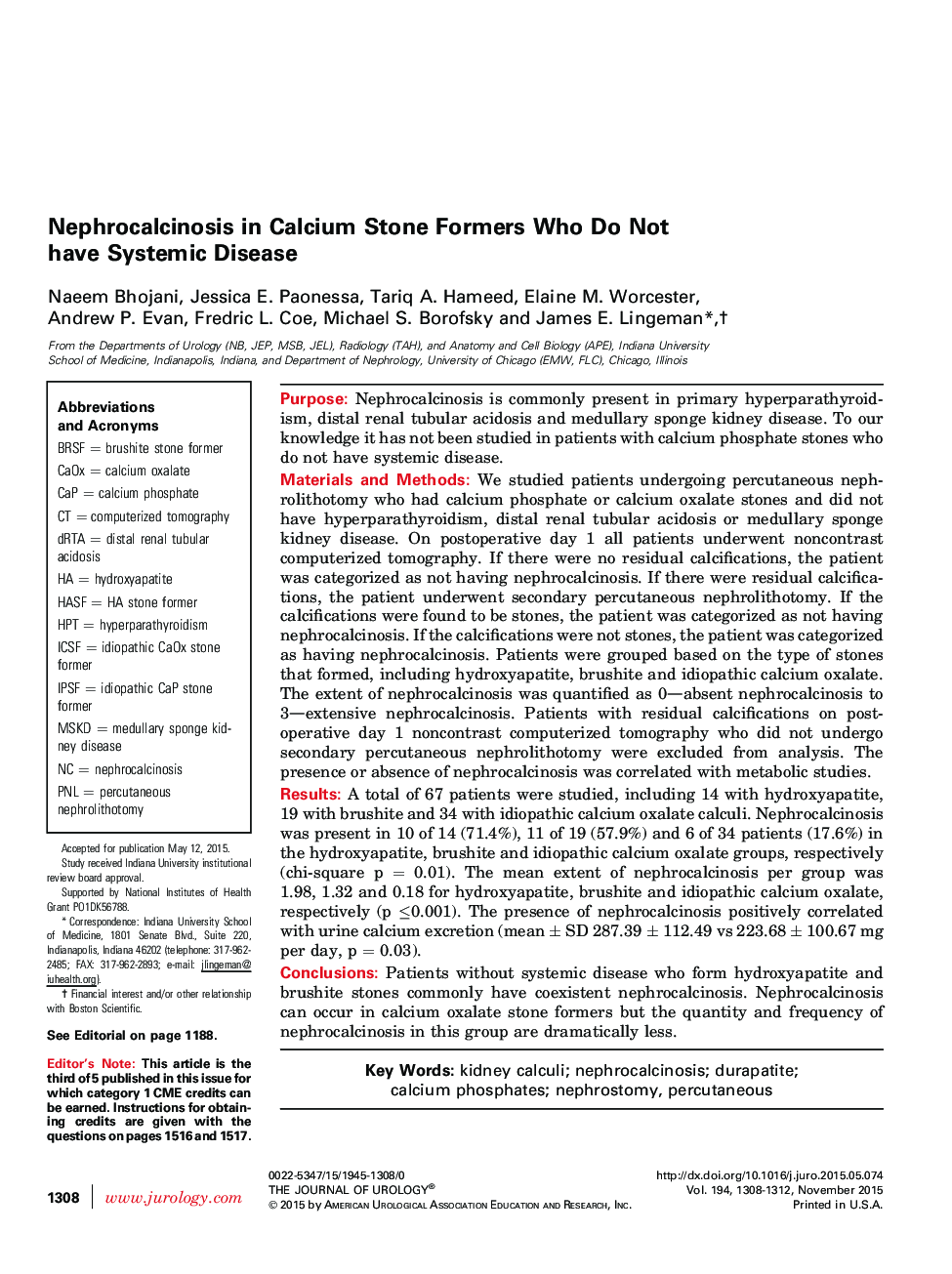| کد مقاله | کد نشریه | سال انتشار | مقاله انگلیسی | نسخه تمام متن |
|---|---|---|---|---|
| 3860985 | 1598884 | 2015 | 5 صفحه PDF | دانلود رایگان |

PurposeNephrocalcinosis is commonly present in primary hyperparathyroidism, distal renal tubular acidosis and medullary sponge kidney disease. To our knowledge it has not been studied in patients with calcium phosphate stones who do not have systemic disease.Materials and MethodsWe studied patients undergoing percutaneous nephrolithotomy who had calcium phosphate or calcium oxalate stones and did not have hyperparathyroidism, distal renal tubular acidosis or medullary sponge kidney disease. On postoperative day 1 all patients underwent noncontrast computerized tomography. If there were no residual calcifications, the patient was categorized as not having nephrocalcinosis. If there were residual calcifications, the patient underwent secondary percutaneous nephrolithotomy. If the calcifications were found to be stones, the patient was categorized as not having nephrocalcinosis. If the calcifications were not stones, the patient was categorized as having nephrocalcinosis. Patients were grouped based on the type of stones that formed, including hydroxyapatite, brushite and idiopathic calcium oxalate. The extent of nephrocalcinosis was quantified as 0—absent nephrocalcinosis to 3—extensive nephrocalcinosis. Patients with residual calcifications on postoperative day 1 noncontrast computerized tomography who did not undergo secondary percutaneous nephrolithotomy were excluded from analysis. The presence or absence of nephrocalcinosis was correlated with metabolic studies.ResultsA total of 67 patients were studied, including 14 with hydroxyapatite, 19 with brushite and 34 with idiopathic calcium oxalate calculi. Nephrocalcinosis was present in 10 of 14 (71.4%), 11 of 19 (57.9%) and 6 of 34 patients (17.6%) in the hydroxyapatite, brushite and idiopathic calcium oxalate groups, respectively (chi-square p = 0.01). The mean extent of nephrocalcinosis per group was 1.98, 1.32 and 0.18 for hydroxyapatite, brushite and idiopathic calcium oxalate, respectively (p ≤0.001). The presence of nephrocalcinosis positively correlated with urine calcium excretion (mean ± SD 287.39 ± 112.49 vs 223.68 ± 100.67 mg per day, p = 0.03).ConclusionsPatients without systemic disease who form hydroxyapatite and brushite stones commonly have coexistent nephrocalcinosis. Nephrocalcinosis can occur in calcium oxalate stone formers but the quantity and frequency of nephrocalcinosis in this group are dramatically less.
Journal: The Journal of Urology - Volume 194, Issue 5, November 2015, Pages 1308–1312